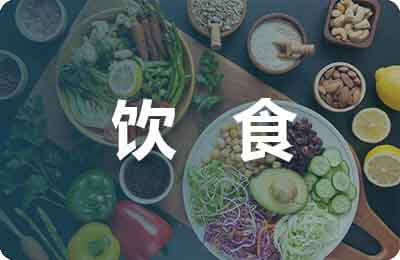痛风和高尿酸血症患者的饮食控制
时间:2022-05-30 11:40:48

摘 要 随着生活水平提高,痛风和高尿酸血症的患病率也日益升高。饮食与痛风和高尿酸血症的关系密切,是痛风和高尿酸血症患者管理必不可少的部分。本文介绍痛风和高尿酸血症患者的饮食控制。
关键词 痛风 高尿酸血症 饮食
中图分类号:R459.3; R589.7 文献标识码:A 文章编号:1006-1533(2015)11-0003-03
ABSTRACT With the continuous improvement of living standards, the prevalence of gout and hyperuricemia has been increasing these years. Diet is closely related to gout and hyperuricemia. Diet management is an essential part in the management of gout and hyperuricemia. The relationship of diet with gout and hyperuricemia is reviewed in this article.
KEY WORDS gout; hyperuricemia; diet
痛风为尿酸盐沉积性炎性疾病,其发病的根本原因是高尿酸血症。尿酸是嘌呤代谢的最终产物,故既往认为高嘌呤食物的摄入与高尿酸血症及痛风密切相关。但新近的一些研究发现,并不只有高嘌呤食物会引起痛风。那么,究竟哪些食物属于高嘌呤食物?高嘌呤食物都会引起痛风吗?除了高嘌呤食物之外,还有哪些食物是痛风及高尿酸血症患者需要避免食用的呢?又有哪些食物适合痛风患者食用呢?本文将回答这些问题。
应避免食用的食物
高嘌呤食物
常见的高嘌呤食物有海鲜、肉汤、动物内脏和大豆等。Choi等[1]对47 150名无痛风史的40岁以上男性随访12年,发现新发痛风病例730例,发病年龄的高峰在55 ~ 69岁间。研究发现,摄入大量的肉和海鲜会使血尿酸水平升高:摄入肉量最多组与最少组相比,相对危险度(relative risk, RR)为1.41(95% CI: 1.07 ~ 1.86);摄入海鲜量最多组与最少组相比,RR为1.51(95% CI: 1.17 ~ 1.95)。
高嘌呤食物的摄入不仅与血尿酸水平升高相关,而且研究证实还与反复的痛风发作相关。有研究对633例患者进行回顾分析,统计、分析痛风发作与嘌呤摄入量间的关系,发现嘌呤摄入量最高组与最低组相比,比值比(odds ratio, OR)为4.76[2]。
作为高嘌呤食物的代表,豆制品既往也在痛风患者的禁食名单中。但一项日本的研究表明,豆腐对血尿酸水平的影响并不大[3],认为可能是大豆中所含的嘌呤大部分在加工过程中被除去了。最新研究显示,豆制品的摄入总量与高尿酸血症的患病率间呈负相关关系[4-5],原因可能是豆类富含的嘌呤虽可导致血尿酸水平升高,但其也含有促尿酸排泄物质,且后者的作用更显著。
那么,含高嘌呤的大豆会不会引起痛风呢?一项对2 076人进行的回顾性研究发现,含高嘌呤蔬菜的摄入与血尿酸水平升高的关系不大[6]。Choi等[1]的前瞻性研究也证实,高嘌呤食物(如大豆)与痛风的关系不大。目前尚无足够的证据证实大豆或豆制品与痛风发病相关[5]。但为什么含高嘌呤的肉或海鲜会诱发痛风发生呢?现在研究认为,这主要与动物肉中含有游离脂肪酸有关。体外试验显示,游离脂肪酸可与尿酸盐晶体组织相互作用而产生白介素-1β,最终导致痛风性关节炎的发生[7]。
酒精类饮料
除高嘌呤食物外,酒精类饮料与痛风及高尿酸血症的关系目前也日益得到重视。有横断面研究(cross-sectional study)提示,啤酒摄入与高尿酸血症相关[8]。一项长达12年的随访研究也提示,痛风风险与酒的种类相关:啤酒引起痛风的风险最高(12 oz/d的RR为1.49, 95% CI: 1.32 ~ 1.70),烈性酒也与痛风相关(RR为1.15, 95% CI: 1.04 ~ 1.28),但葡萄酒与痛风的关系不明确(RR为1.04, 95% CI: 0.88 ~ 1.22)[9]。最近完成的一项荟萃分析显示,酒精摄入与痛风相关,而且饮酒量越大、风险越高:与不饮酒或偶尔饮酒相比,少量(≤1份/d)、中量(>1份/d、但
含糖饮料
既往人们对含糖软饮料的印象仅在于其可能会导致肥胖或骨质疏松。有学者对9 400人进行回顾性研究后发现,含糖软饮料的摄入还可提高高尿酸血症风险[12]。这一点也在一项前瞻性队列研究中得到了证实。一项对46 393人进行的长达12年的随访研究表明,与每月摄入
有益的食物
蔬菜和水果
横断面研究提示,蔬菜和水果食用量多的人的血尿酸水平较低(P=0.030)[16]。但前瞻性研究发现,果汁摄入与痛风发作呈正相关关系[13]。因为果汁富含果糖(如苹果汁和橘子汁),所以过量饮用果汁同样会提高痛风发病风险。一项对663例痛风患者进行的病例对照研究发现,食用樱桃可以降低痛风发作的风险(OR为0.65, 95% CI: 0.50 ~ 0.85),食用樱桃制品也有类似作用(OR为0.55, 95% CI: 0.30 ~ 0.98)[17],提示樱桃可能有益于痛风患者。
咖啡
一项对89 433名女性进行的26年随访研究表明,饮用咖啡(>237 ml/d)可以降低痛风的风险(RR为0.75, 95% CI: 0.64 ~ 0.95),推测可能是咖啡因通过竞争性地抑制黄嘌呤氧化酶而最终降低尿酸生成的[18]。咖啡能降低尿酸生成也在多项其他研究[19-21]中得到了证实。此外,中国人有饮茶习惯,目前研究显示茶与血尿酸水平无相关性,但该结论仍需更多的研究来证实[21]。
奶制品
Choi等[1]进行的前瞻性研究还发现,奶制品食用量高的人的痛风发病率低,与食用量低者相比,RR为0.56(95% CI: 0.42 ~ 0.74)。但全脂奶因脂肪含量较高,可能会提高痛风风险,故建议痛风患者多饮用低脂奶。一项为期3个月的干预研究提示,富含巨糖肽和G600奶脂提取物的脱脂奶粉可降低痛风患者的复发率[22]。另有研究表明,脱脂或低脂牛奶和酸奶也会降低痛风的发病风险,但全脂奶制品没有此益处[6]。
维生素C
一项随访20年的前瞻性研究发现,口服维生素C可以降低痛风的发生率,并与剂量呈正相关关系(P
痛风患者的饮食推荐
结合目前的循证医学证据,2012年美国风湿病学学会在其的痛风管理指南中提出了对痛风患者的饮食推荐(表1)[25]。
结语
饮食控制对痛风或高尿酸血症患者很重要,建议痛风患者应避免进食动物内脏、含糖饮料和酒,限制肉、海鲜和甜点的摄入,鼓励多食蔬菜、樱桃和低脂或脱脂奶,可适量饮用咖啡。痛风患者还应注意控制体重,保持健康的生活方式,多饮水,保持>2 000 ml/d的尿量。
参考文献
Choi H, Atkinson K, Karlson E, et al. Purine-rich foods, dairy and protein intake, and the risk of gout in men [J]. N Engl J Med, 2004, 350(11): 1093-1103.
Zhang Y, Chen C, Choi H, et al. Purine-rich foods intake and recurrent gout attacks [J]. Ann Rheum Dis, 2012, 71(9): 1448-1453.
Yamakita J, Yamamoto T, Moriwaki Y, et al. Effect of tofu (bean curd) ingestion and on uric acid metabolism in healthy and gouty subjects [J]. Adv Exp Med Biol, 1998, 431: 839-842.
Villegas R, Xiang YB, Elasy T, et al. Purine-rich foods, protein intake, and the prevalence of hyperuricemia: the Shanghai Men’s Health Study [J]. Nutr Metab Cardiovasc Dis, 2012, 22(5): 409-416.
Messina M, Messina VL, Chan P. Soyfoods, hyperuricemia and gout: a review of the epidemiologic and clinical data [J]. Asia Pac J Clin Nutr, 2011, 20(3): 347-358.
Zgaga L, Theodoratou E, Kyle J, et al. The association of dietary intake of purine-rich vegetables, sugar-sweetened beverages and dairy with plasma urate, in a cross-sectional study [J/OL]. PLoS One, 2012, 7(6): e38123 [2014-07-25]. http://www.ncbi.nlm.nih.gov/pmc/articles/PMC3368949.
Joosten LA, Netea MG, Mylona E, et al. Engagement of fatty acids with Toll-like receptor 2 drives interleukin-1β production via the ASC/caspase 1 pathway in monosodium urate monohydrate crystal-induced gouty arthritis [J]. Arthritis Rheum, 2010, 62(11): 3237-3248.
Yu KH, See LC, Huang YC, et al. Dietary factors associated with hyperuricemia in adults [J]. Semin Arthritis Rheum, 2008, 37(4): 243-250.
Choi HK, Atkinson K, Karlson EW, et al. Alcohol intake and risk of incident gout in men: a prospective study [J]. Lancet, 2004, 363(9417): 1277-1281.
Wang M, Jiang X, Wu W, et al. A meta-analysis of alcohol consumption and the risk of gout [J]. Clin Rheumatol, 2013, 32(11): 1641-1648.
Lyu LC, Hsu CY, Yeh CY, et al. A case-control study of the association of diet and obesity with gout in Taiwan [J]. Am J Clin Nutr, 2003, 78(4): 690-701.
Bae J, Chun BY, Park PS, et al. Higher consumption of sugar-sweetened soft drinks increases the risk of hyperuricemia in Korean population: the Korean Multi-Rural Communities Cohort Study [J]. Semin Arthritis Rheum, 2014, 43(5): 654-661.
Choi HK, Curhan G. Soft drinks, fructose consumption, and the risk of gout in men: prospective cohort study [J]. BMJ, 2008, 336(7639): 309-312.
Fox IH, Palella TD, Kelley WN, et al. Ethanol-induced hyperuricemia: a marker for cell energy crisis [J]. N Eng J Med, 1987, 317(2): 111-112.
Livesey G. Fructose ingestion: dose-dependent responses in health research [J]. J Nutr, 2009, 139(6): 1246S-1252S.
Tsai YT, Liu JP, Tu YK, et al. Relationship between dietary patterns and serum uric acid concentrations among ethnic Chinese adults in Taiwan Asia [J]. Pac J Clin Nutr, 2012, 21(2): 263-270.
Zhang Y, Neogi T, Chen C, et al. Cherry consumption and decreased risk of recurrent gout attacks [J]. Arthritis Rheum, 2012, 64(12): 4004-4011.
Choi HK, Curhan G. Coffee consumption and risk of incident gout in women: the Nurses’ Health Study [J]. Am J Clin Nutr, 2010, 92(4): 922-927.
Pham NM, Yoshida D, Morita M, et al. The relation of coffee consumption to serum uric acid in Japanese men and women aged 49-76 years [J/OL]. J Nutr Metab, 2010, 2010: 930757 [2014-08-19]. http://www.ncbi.nlm.nih.gov/pmc/articles/PMC2925214/.
Choi HK, Willett W, Curhan G. Coffee consumption and risk of incident gout in men: a prospective study [J]. Arthritis Rheum, 2007, 56(6): 2049-2055.
Choi HK, Curhan G. Coffee, tea, and caffeine consumption and serum uric acid level: the third national health and nutrition examination survey [J]. Arthritis Rheum, 2007, 57(5): 816-821.
Dalbeth N, Ames R, Gamble GD, et al. Effects of skim milk powder enriched with glycomacropeptide and G600 milk fat extract on frequency of gout flares: a proof-of-concept randomised controlled trial [J]. Ann Rheum Dis, 2012, 71(6): 929-934.
Choi HK, Gao X, Curhan G. Vitamin C intake and the risk of gout in men: a prospective study [J]. Arch Intern Med, 2009, 169(5): 502-507.
Juraschek SP, Miller ER 3rd, Gelber AC. Effect of oral vitamin C supplementation on serum uric acid: a meta-analysis of randomized controlled trials [J]. Arthritis Care Res (Hoboken), 2011, 63(9): 1295-1306.
Khanna D, Fitzgerald JD, Khanna PP, et al. 2012 American College of Rheumatology guidelines for management of gout. Part 1: systematic nonpharmacologic and pharmacologic therapeutic approaches to hyperuricemia [J]. Arthritis Care Res (Hoboken), 2012, 64(10): 1431-1446.
(收稿日期:2014-01-07)
